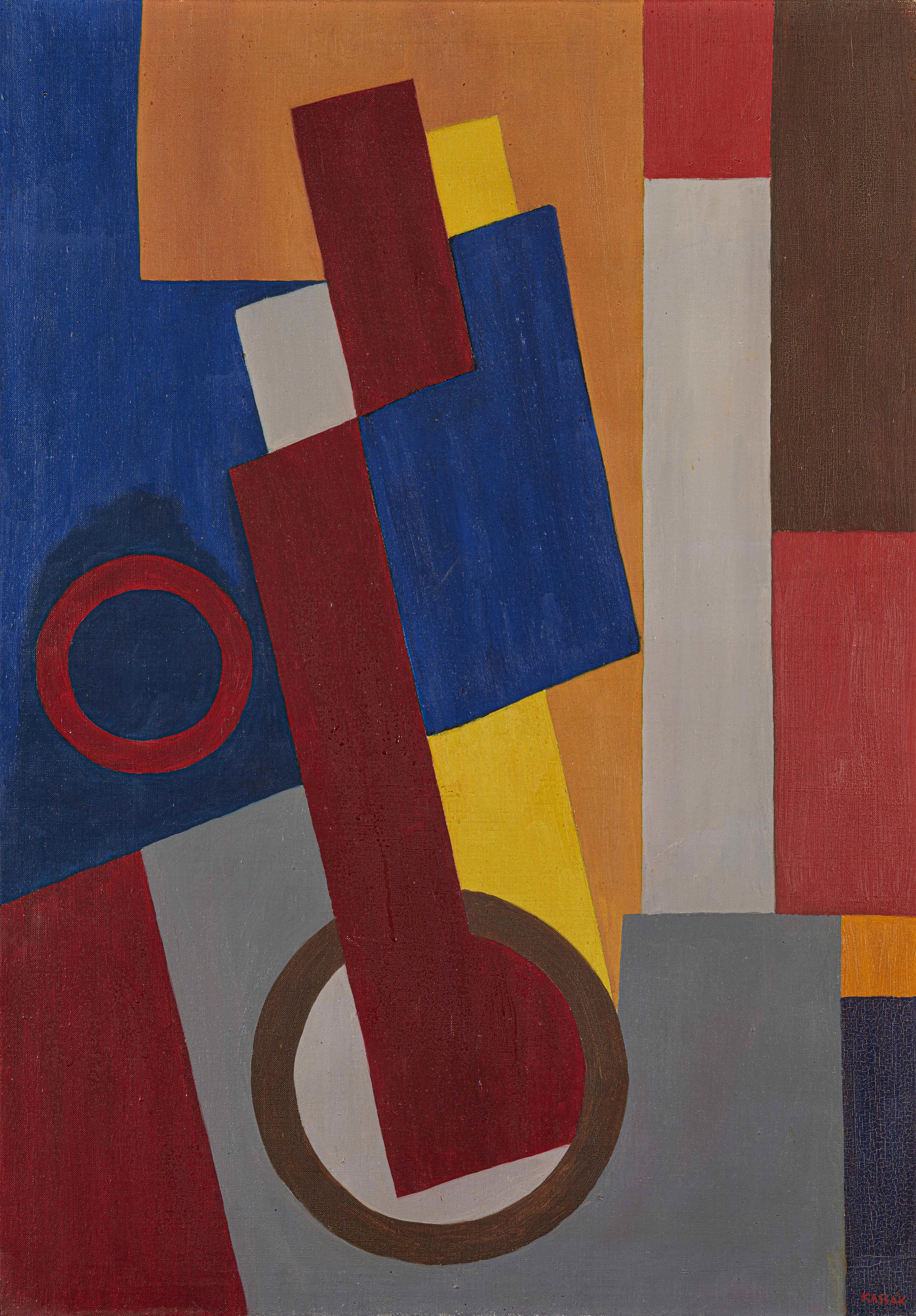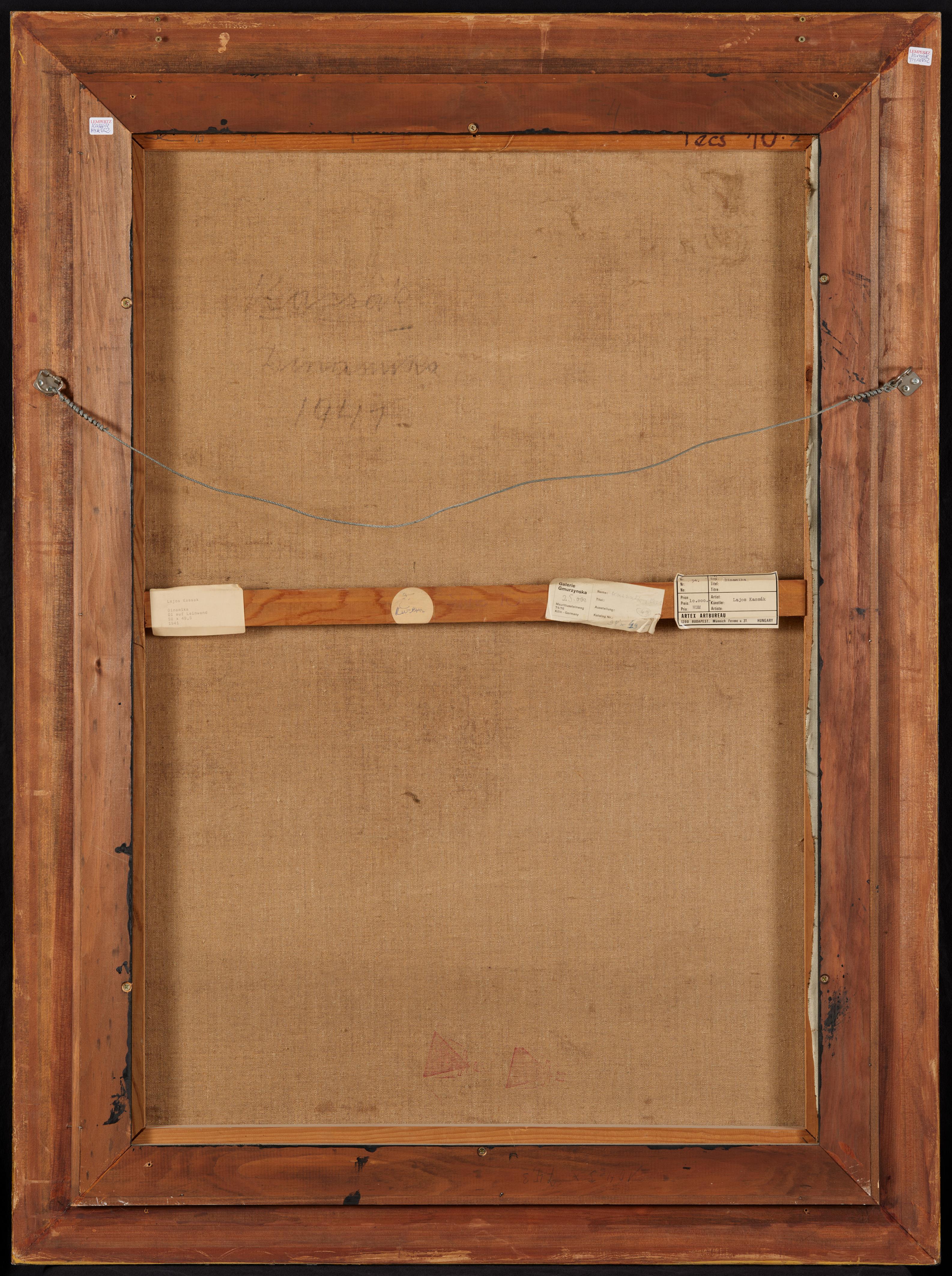Lajos Kassák
Dinamika
1941/early 1960s
Oil on canvas. 99 x 70.3 cm. Framed. Signed 'KASSÁK' in red lower right. Signed, dated and inscribed 'Kassak, Dinamika, 1941' in red by Klara Kassák verso on canvas and with a triangular red stamp. Inscribed "Pécs 167" on the top of the stretcher. - In very good condition with fresh colours. Minor wear to the edges, slight craquelure to the blue area in the lower right.
In 1907 the Hungarian painter and writer Lajos Kassák came to Paris, where he initially wrote expressionist poems, dramas and novels in the circle surrounding Guillaume Apollinaire, Robert Delaunay and Pablo Picasso. It was his contact with Kurt Schwitters, Oskar Schlemmer and fellow Hungarian László Moholy-Nagy and his engagement with their works which first led him to create his own art in 1921. However, his editorship of cultural-political journals such as “A Tett” (The Action) and “Ma” (Today), which featured contributions from art-world figures as important as Hans Arp, Archipenko, Schwitters and Walden, was also an important part of his work. Together with Moholy-Nagy he edited “The Book of New Artists”, published in English, German and Hungarian.
After living in Vienna from 1919 to 1926, Kassák returned back to Budapest. Initially working there primarily as a commercial designer with his own agency, he gradually began painting again; in 1928 he received his first opportunity to exhibit his “Bildarchitekturen” (pictorial architectures) – the term he used for his constructivist works – in his home town. From then on he continued to create abstract drawings, collages, gouaches and paintings based on the work of Moholy-Nagy, Arp and El Lissitzky and composed primarily of basic geometrical forms: he repeatedly returned back to their principles over the course of his oeuvre, extending into the 1960s.
Certificate
We would like to thank Merse Pál Szeredi, Head of Department Kassák Museum Budapest, for additional information. According to his information, the painting dates from the early 1960s and was deliberately predated by Kassák.
Provenance
Galerie Gmurzynska, Cologne (label on reverse); Private collection, North Rhine-Westphalia
Exhibitions
Pécs/Lucerne 1975 (Museum Pécs/Kunstmuseum Lucerne), Magyar aktivizmus/Kunst in Ungarn 1900-1950, cat. no. 167; Cologne 1970 (Galerie Gmurzynska), Lajos Kassák, no. 43




